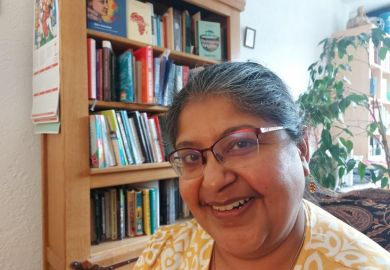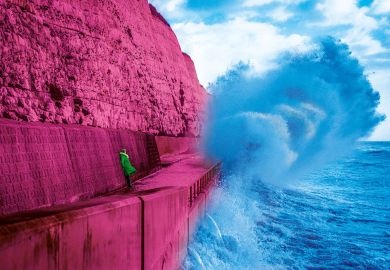Was Arthur Evans really a volcanic fantasist? Tom Palaima thinks not.
On the morning of March 23 1900, Arthur John Evans, keeper of the Ashmolean collection at Oxford University and later one of the most celebrated archaeologists of the 20th century, headed out towards the hill of Kephala-Knossos, south of Candia (Heraklion) in north-central Crete. He was a respected scholar of such diverse subjects as Illyrian, Sicilian and Roman coinage, Celtic and Mediterranean religion, the contemporary Balkans and pre-Phoenician systems of writing in Crete. But he had little formal experience as a field excavator, and he was undertaking excavation of what would become the type-site for the last major lost civilisation of Europe, which he would call "Minoan". He had enlisted as associates three experts: in archaeological methods (David Hogarth and Duncan MacKenzie), prehistoric pottery analysis (MacKenzie), and architectural interpretation and reconstruction (Theodore Fyfe). He was sure that at Knossos, myth would intersect with history. He was right.
If you believe Joseph Alexander MacGillivray's Minotaur , Evans was wrong. His book will appeal to those convinced by Martin Bernal's controversial Black Athena (1987) that ancient Greek culture had Afro-Asiatic origins. MacGillivray uses a Bernalist style of oblique reasoning and implies at several points strong Egyptian influence on the palatial society of Minoan Crete (c.1900-1200 BC). MacGillivray's other main thesis is that Evans "created" Minoan culture to satisfy internal psychological needs, using his wealth and influence to override critical re-examination. Hence, our understanding of the main features of Minoan civilisation and ritual - kingship, art and architecture, the conceptualisation of the central palace - are supposedly derived from the mythical fantasies of a scholar whose beliefs in Aryan cultural superiority even embraced genocide.
Evans was the son of John Evans "the Great", geologist, antiquarian, numismatist, fellow of the Royal Society and member of a paper-making firm.John Evans had amassed wealth sufficient to afford his son freedom of action. MacGillivray resents Arthur Evans's independent means. He contrasts Evans's circumstances with those of self-made scholars such as Hogarth, MacKenzie and Sir John Myres, and he puts a bad slant on Evans's treatment of young scholars. Take Myres as a test case.
Although 18 years younger than Evans, Myres knew him for nearly 50 years, paying a final visit on his 90th birthday in July 1941, three days before he died. Myres wrote the eloquent obituary notice for Sir Arthur that appeared in the Proceedings of the British Academy for the same year. For ten years afterwards, he painstakingly edited for publication the full manuscript Evans had left unfinished on the approximately 1,800 undeciphered clay-tablet inscriptions in Minoan "Linear Class B" from Knossos. Before reading Minotaur , read Myres's obituary. It will have the same effect as a double bourbon before heading to a disagreeable function.
Half a century earlier, Myres was a gifted student of archaeology, topography and geography and how they related to Greek history and tradition. He was a natural soul-mate for a polymathic "gentleman scholar" such as Evans who believed strongly that Greek mythological and historical accounts about remote prehistory had a factual basis. MacGillivray narrates Myres's failed attempts in autumn 1893 to obtain rights to excavate at Knossos. Knossos had nine suitors, including Heinrich Schliemann. Myres was arguably the weakest, a 24-year-old student with no permanent post, no research funds and little in the way of certifiable scholarly credentials. The tense political situation in Turkish-ruled Crete was such that Joseph Hazzidakis on behalf of the Cretan Syllogos responded honestly: "As things are today I think it impossible for an excavation permit to be granted (anywhere) in Crete." (Italics and insertion mine.) Myres wisely shrugged his shoulders and refocused his attentions on Cypriote archaeology. There is no hint of any interference from Evans in the matter nor of any resentment towards Evans on Myres's part for later obtaining permission to excavate at Knossos. In 1900, Myres served as first secretary for the Cretan Exploration Fund, set up expressly to help support Evans's Knossos excavations.
In the spring of 1895, Evans and Myres travelled through Crete exploring antiquities. They took notes on a system of fortified stations that seemed to lie along a prehistoric route. They wrote a brief joint account for the journal Academy. This was exceptional for Evans. He was given to working alone on his papers and books. Yet he did not discourage those who collaborated with him from publishing separately the results of their own specialised work. See the entries for Duncan MacKenzie and Theodore Fyfe in the Minotaur bibliography.
We are treated to the following alternative hypotheses as to why Evans co-wrote the brief Academy piece with Myres: the 44-year-old Evans was offering an enticement to his 26-year-old protege - towards what we are not told; the intellectually arrogant Evans, for one brief moment in a long lifetime, actually regarded someone as his intellectual equal; or Evans felt guilty about "having removed from the young man's grasp the prize of Kephala (Knossos), which he had worked so hard to secure years before Evans took an interest". Myres visited the site of Kephala in late summer 1893. In October he tried to put together a proposal to excavate the site. His speed in so doing was Evansesque. MacGillivray himself calls Myres a "brash youth" who "seemed to be ignorant or unconcerned about any prior claims to excavate" and to be unaware of the "fairly grand programme of research" such an excavation would require.
Evans took interest in Kephala not years after Myres's brief fling at obtaining excavation rights, but six months later, in March 1894. He laid the groundwork for his eventual success by impressing Hazzidakis with the feasibility of his proposal, the strength of his credentials, and the sincerity of his vision of Cretan prehistory. He displayed a shrewdness, honed during his experiences with Balkan politics in the mid-1870s, that Hazzidakis might well have appreciated. Evans persuaded Hazzidakis to negotiate for him the private purchase of a quarter of the land of the Kephala hill. Evans became part-owner of the site of ancient Knossos. He would eventually own it all.
There are two simple lessons here. First, if you want to excavate on an island during a period of intermittent civil war, buy the site and work with the side that is going to win. Second, the author of Minotaur seems to go out of his way to misrepresent his subject.
Richard Daley, the late mayor of Chicago, coined the useful neologism "insinuendo" for this technique. MacGillivray uses it artfully to put spin on Evans's school days at Harrow and to transform innocent remarks by Evans's mother into proof that Evans had a dark, Minotaurish and "volcanic" nature. MacGillivray also uses insinuendo to associate Evans with the culturally elitist and racist ideas of his father-in-law, Edward Freeman. This allegation is based on a single quotation from Evans's youthful epistolary report of travels, Through Bosnia and the Herzegovina on Foot (1876). Evans was then a "brash" 24-year-old, used to privilege and given to shows of iconoclasm. Read the entire passage in context. Decide for yourself whether Evans is seriously "confess(ing) to a belief in the need for genocide".
The publisher's release advertises that MacGillivray, from his close work with Evans's papers, "shows him in his true colours", as a "fabulist", "quarrelling with more scrupulous rivals", "a driven man arrogantly propounding a distorted view of the origins of Cretan culture". Substitute "paints" for "shows", "new" for "true", carefully nuance "fabulist", sanctify those who saw things differently from Evans, and this rings true. But it seriously problematises MacGillivray's treatment of the progress of scholarship relating to Minoan prehistory. This is unfortunate, because his book might have better told the story of the intellectual and cultural background of Evans. Evans absorbed in his childhood new ways of looking at the world promulgated by his father's intellectual peers: Lubbock, Tylor, Pitt-Rivers, Darwin, even Kingsley and his Greek legends. Evans turned his acute near-sightedness to advantage by becoming a renowned scholar of ancient coins, an ingenious interpreter of seal iconography and the primary researcher of the scripts of the Minoan palatial period. These he identified and classified into workable systems that we still use. He energetically and diplomatically improved the Ashmolean collection. He excavated and preserved Knossos. His ideas on prehistoric religion, prehistoric kingship and the functions of the Palace of Minos have had a long-term influence. Most are no longer treated as dogma. Some never were.
I can only assert the strengths of Evans as the father of the study of Aegean scripts and attest to the scrupulous accuracy of the drawings, signary and palaeographical charts in his manuscript for Scripta Minoa II . In Minotaur , these are buried in "insinuendo" about Evans's erroneous chronology for the dating of Linear B. Evans did project on the site of Knossos ideas about Minos, Ariadne, the Minotaur and the labyrinth, and these coloured his interpretations. But this does not falsify the basic work done at Knossos. We can look in new ways at the data Evans, MacKenzie and Fyfe preserved and draw our own conclusions. Reassessment started with Alan Wace and Carl Blegen in Evans's own lifetime. Recently, Jan Driessen's The Scribes of the Room of the Chariot Tablets , has used palaeography, sealing typology, contextual prosopography and linguistic analysis to redate the Knossos tablets once more.
Errors in Minotaur betray its anti-classical bias. It assigns the tale of Bellerophon in The Iliad Book 6 to Hippolochus and speaks of semata legra (sic) on Proetus's folded tablet. It garbles the story of Aristides the Just. No amount of wishful thinking makes it reasonable to derive the pre-Greek term laburinthos (labyrinth) from Egyptian Nemar.
In MacGillivray's "intellectual" biography of Sir Arthur Evans, Theseus not only slays the Minotaur, he pointlessly assassinates his character first.
Thomas G. Palaima is professor of classics, University of Texas at Austin,United States.
Minotaur: Sir Arthur Evans and the Archaeology of the Minoan Myth
Author - Joseph Alexander MacGillivray
ISBN - 0 224 04352 8
Publisher - Cape
Price - £20.00
Pages - 373
Register to continue
Why register?
- Registration is free and only takes a moment
- Once registered, you can read 3 articles a month
- Sign up for our newsletter
Subscribe
Or subscribe for unlimited access to:
- Unlimited access to news, views, insights & reviews
- Digital editions
- Digital access to THE’s university and college rankings analysis
Already registered or a current subscriber? Login



